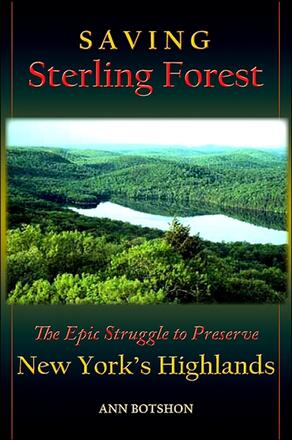
Saving Sterling Forest
The Epic Struggle to Preserve New York's Highlands
Alternative formats available from:
The story of the twenty-five-year quest to preserve twenty thousand acres of forest in southeastern New York.
Description
This is the inspiring story of the twenty-five-year-long effort to preserve Sterling Forest, a tract of rugged, upland terrain encompassing twenty thousand acres within the New York–New Jersey Highlands. Barely forty miles northwest of New York City, Sterling Forest seemed destined to suffer the same fate that had befallen thousands of acres of land in this rapidly suburbanizing corridor. The fight to save Sterling Forest brought together one of the largest coalitions of environmental groups and government entities ever assembled. Despite the loose, sometimes fractious nature of the alliance, the coalition managed to extract support from Congress, New York State, New Jersey, and private donors, while at the same time negotiating a contract to purchase the land from the Sterling Forest Corporation, a company that vigorously protected its financial interests at every turn. Deemed by some to be one of the more remarkable environmental victories of the 1990s, the successful outcome of the Sterling Forest struggle—a large state park within easy access of millions of people and a protected supply of water to New Jersey residents—embodied virtually every facet of land-use conflict. It provides a model for saving other areas where critical wild lands are threatened by development.
Ann Botshon (1942–2004) was Coordinator of the Wallkill River Task Force and Editor of the Sierra Atlantic, the quarterly magazine published by the Atlantic (New York) Chapter of the Sierra Club.
Reviews
"The long but ultimately victorious battle to protect Sterling Forest should be a model for other efforts around the country to prevent sprawl and preserve open spaces. Passionate private citizens, supported by several nonprofit organizations and backed by the hard work of public officials in two states and at many levels of government, together defended this spectacular natural resource from rapidly encroaching development. As a result, we established one of the largest tracts of protected land near a major metropolitan area to be found anywhere in the country, ensuring that this ecologically, scenically, and historically significant property will be enjoyed by future generations.Ann Botshon's work is an important documentation of one of the most significant open space victories in the nation. It is imperative that the lessons learned in the struggle to save Sterling Forest be imparted to a new generation of advocates who are likely to face even more difficult challenges in protecting our access to and relationship with the natural world." — U.S. Representative Maurice D. Hinchey, 22nd Congressional District of New York